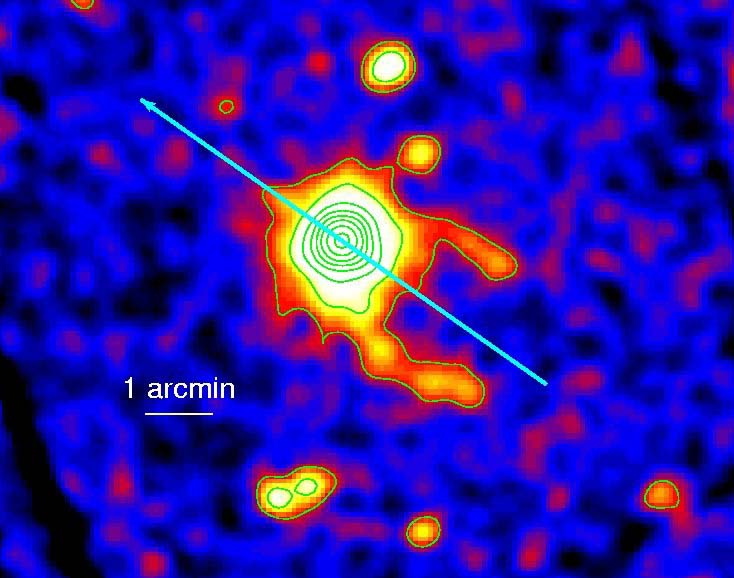
 Credit: ESA/Dr. P. Caraveo
Credit: ESA/Dr. P. Caraveo
Geminga's Trick of the Tail
Gamma ray sources are among the most mysterious objects in the sky. This is partly due to the high-energy nature of gamma rays, which require inherently extreme conditions to be produced. This is also partly due to the difficulty in imaging gamma rays, and the inherently poor spatial resolution of early gamma ray detectors, which made it difficult to associate gamma ray sources with objects seen in other wavelengths. One of the most mysterious was Geminga, a bright pulsing source of gamma rays in the constellation of Gemini, discovered in the 1970's but not
identified until about 20 years later. Astronomers now know Geminga is a pulsing X-ray source and, at about 500 light-years, one of the nearest neutron stars known. It is also a rare example of a class of "radio quiet" neutron stars and as such a item of intense interest to astronomers. A new observation of Geminga by the EPIC camera on the XMM-Newton X-ray Observatory reveals another of Geminga's tricks: as the neutron star plows through space nearly perpendicular to our line of sight (at about 270 thousand miles per hour) it creates a bow shock. The edge of this shock appears as two "tails" visible in the image above.
Last Week *
HEA Dictionary * Archive
* Search HEAPOW
* Education
Each week the HEASARC
brings you new, exciting and beautiful images from X-ray and Gamma ray
astronomy. Check back each week and be sure to check out the HEAPOW archive!
Page Author: Dr. Michael F. Corcoran
Last modified Monday, 26-Feb-2024 17:21:24 EST


